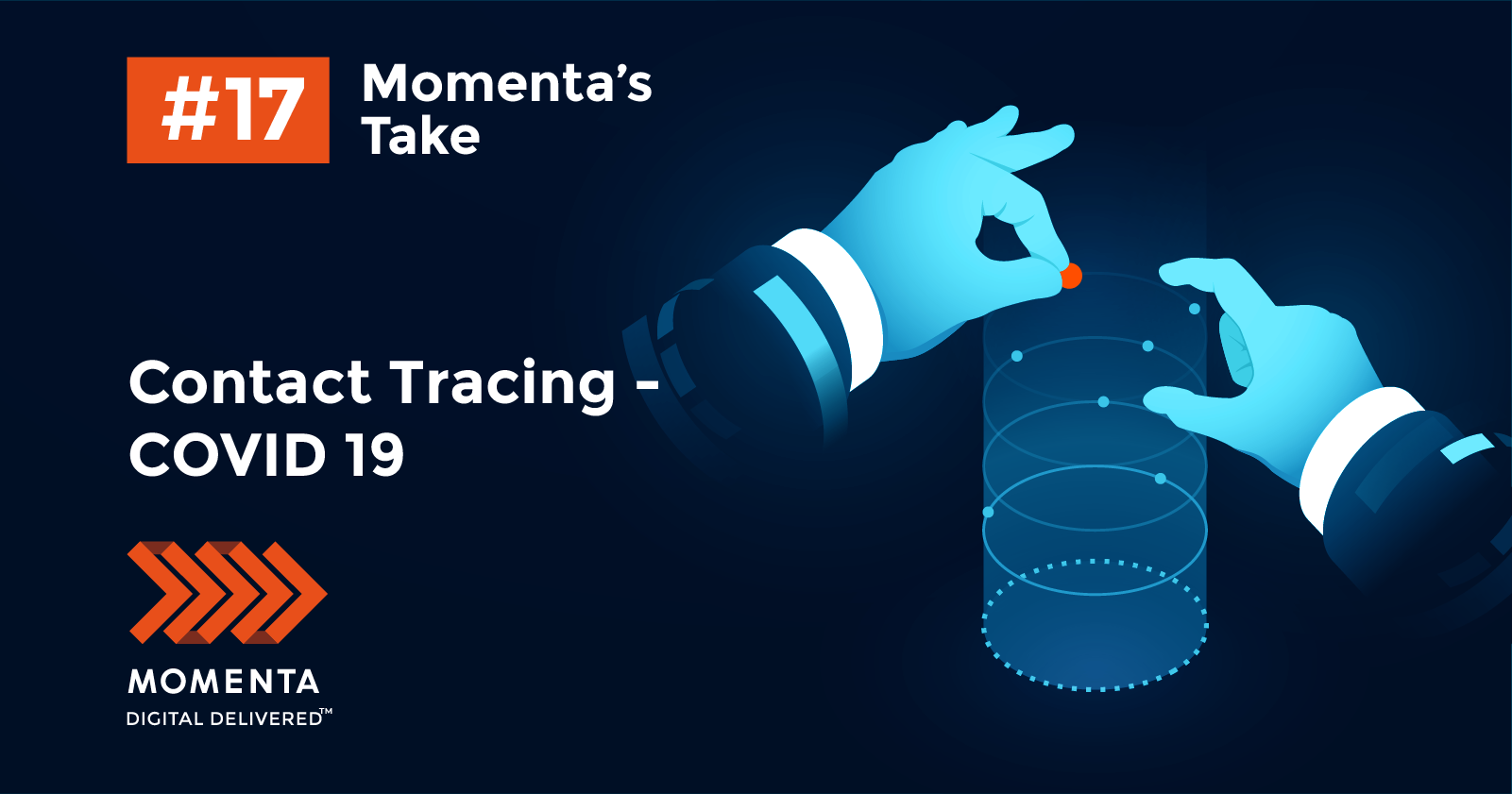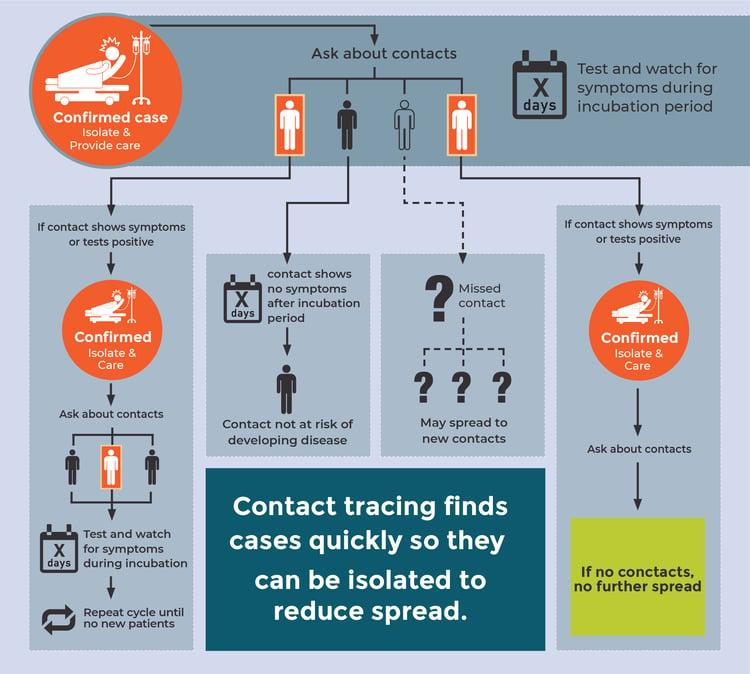Nov 26, 2020
| 4 min read
Momenta's Take #17

With the fall wave of COVID-19 infections accelerating into the end of 2020, the lessons of the past 11 months are far from consensus, with regions across the globe looking to react with the best results, juggling the onslaught of contradicting recommendations, evidence and sentiment. Contact Tracing is one of the most powerful, and controversial methods to contain COVID-19.
What is Contact Tracing?
The public health definition of Contact Tracing is tracing is the process of identification of persons who may have come into contact with an infected person (“contacts”) and subsequent collection of further information about these contacts. By tracing contacts of infected individuals, testing them for infection, treating the infected and tracing their contacts in turn, public health aims to reduce infections in the population.

Source: https://sbt-alliance.com/what-is-contact-tracing-can-iot-technologies-help/
Despite the promise that Contact Tracing is giving officials a tool to get ahead of COVID-19's spread, the cooperation from citizens is challenged by privacy concerns. Hence, despite the availability of sophisticated technology to power applications and systems for Contact Tracing, citizens are resistant to cooperate. A new national study found tracers have yet to overcome Americans' suspicion of the process, and the obstacles related to people's phone habits.
A recent Pew study found that 51% - a majority of Americans would be resistant to at least one core aspect of contact tracing. 48% said they would fully participate.
What does contact tracing involve?
Speaking to and sharing with public health official’s information about who they had been with and where they had gone, and quarantining for 14 days if asked. There are multiple dimensions related to the lack of trust, not the least of which is the potential loss of freedom from movement restrictions. The key to increasing cooperation lies in increasing trust in systems in use – and with distinctly defined boundaries for privacy and against misuse of personal data.
Contact Tracing is an ideal challenge for advanced sensing, communications and data analytics technologies, and there is a lot of impressive work ongoing, and a few successes. There has been notable uses of IoT technologies in Asia for contact tracing. Singapore, implemented an opt-in Bluetooth token solution: throughout the day, a user’s smart device tracks every contact with other people, and he or she is notified if any of those individuals becomes ill. Google and Apple are working on a similar solution for Android and iOS devices. South Korea weaves together cellphone location data, credit card transaction data, CCTV images, and health care data to track COVID patients and enforce social distancing policy.
A recent paper, Efficient Monitoring and Contact Tracing for COVID-19: A Smart IoT-Based Framework published by the IEEE proposes a novel IoT-based real-time solution for contact tracing and monitoring of COVID–19 infection spread. With the advent of IoT there is also a gradual change in healthcare systems. The current emphasis is mostly remote health monitoring and tele-health. This increases the reach of healthcare professionals from hospitals to different environments, such as patients' homes. The paper makes the point that future Healthcare Internet of Things (HIoT) and Internet of Medical Things (IoMT) envision a wide range of capabilities, from maintenance of healthcare equipment to efficient tracking of patients and healthcare providers. Success in Contact Tracing applications could be applied in realizing connected and smart hospitals powered by intelligent communications, connectivity and analytic technologies.
Significant advances in technology
With winter months approaching, there are signs that adoption of Contact Tracing technologies is gaining ground. A new wave of mobile apps that help track exposure to the coronavirus is coming to U.S. ahead of the holidays, fueling optimism that recently introduced features from Apple and Google will significantly boost adoption and impact. California has a COVID Notify exposure notification app. Colorado, Maryland and District of Columbia launched exposure-notification apps with new technology in the last month with over 2.3 million users combined so far. California, Washington and other states are expected to follow in the next months. Smartphone apps complement human contact-tracers, use Bluetooth signals to track when people are in close contact and anonymously alert users when a recent contact tests positive. While there is a lot of work to build trust, the new apps represent significant advances in technology that will complement progress on in-person efforts.

Unlock the Power of Digital - Momenta encompasses leading Strategic Advisory, Talent, and Ventures practices for Digital Industry. Connect with us to find out more about our three practices and how we deliver digital value.